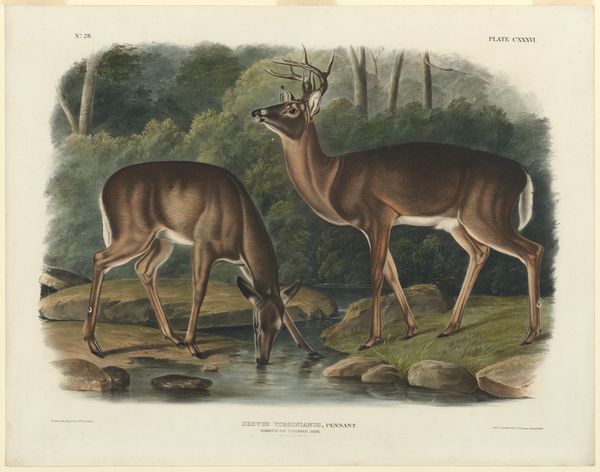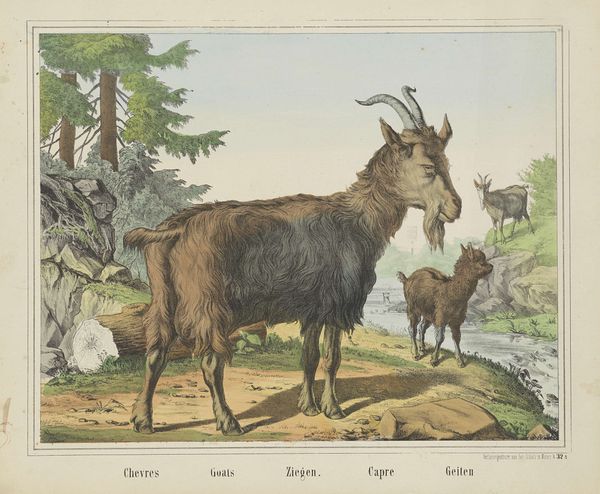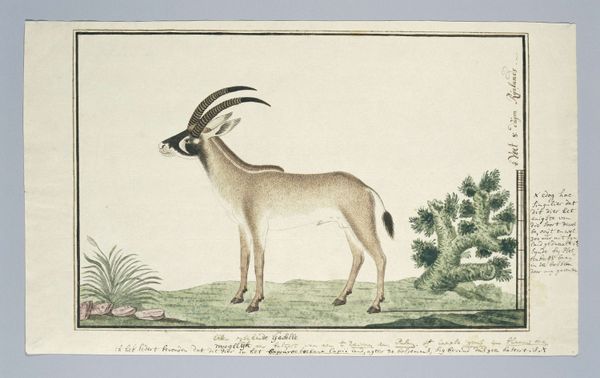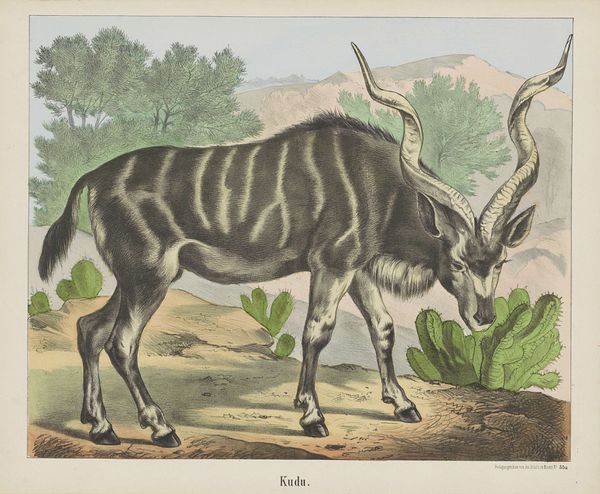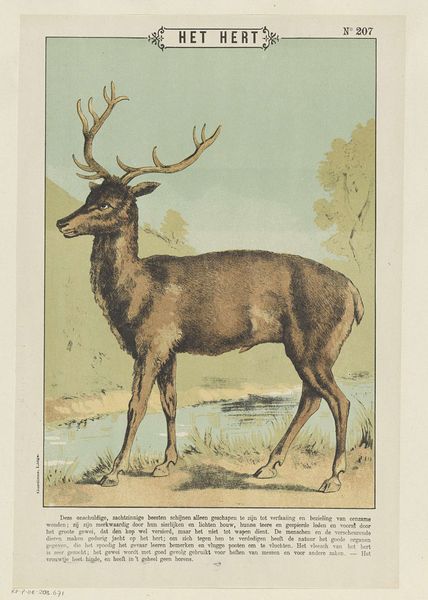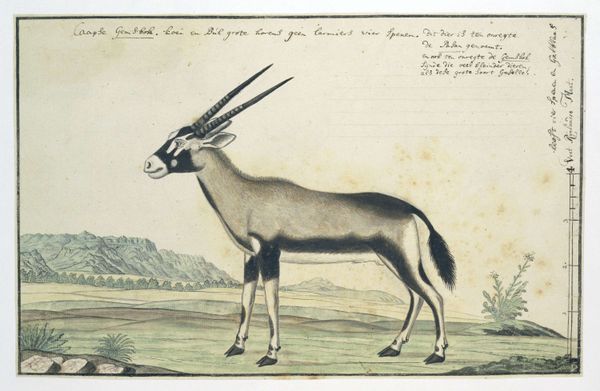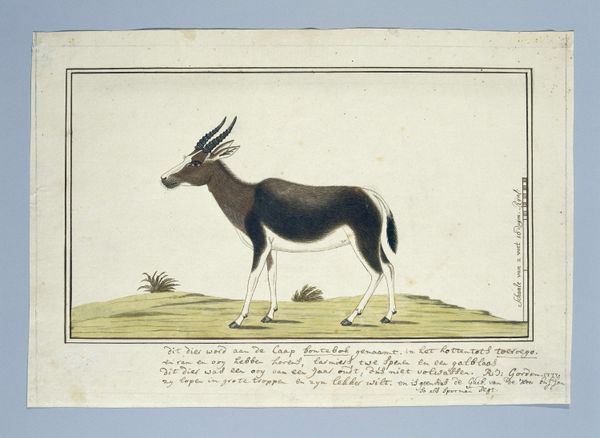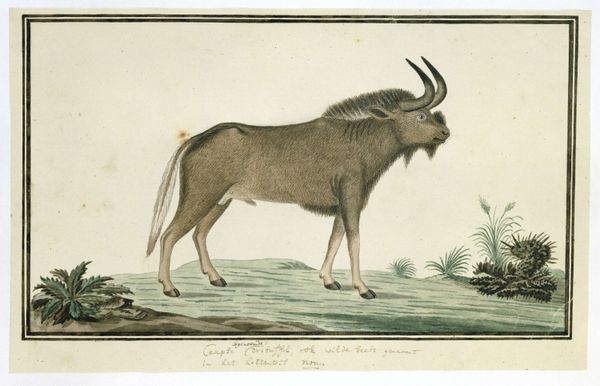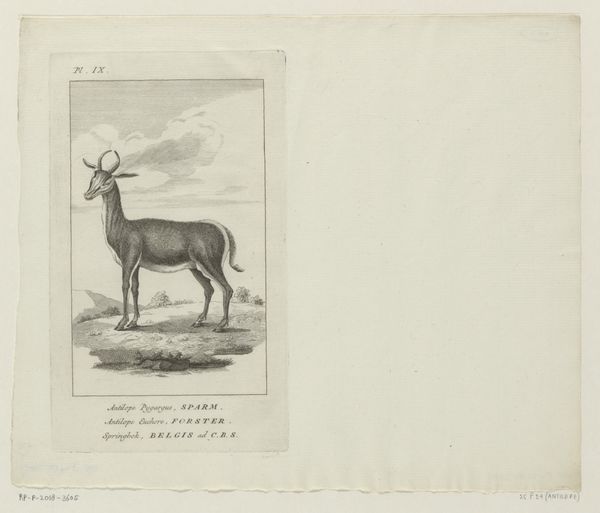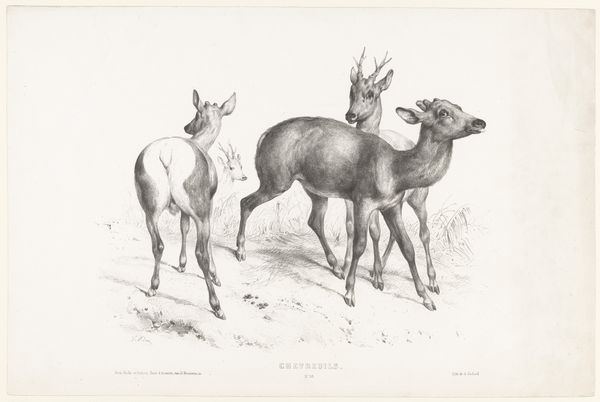
watercolor
#
landscape
#
watercolor
#
coloured pencil
#
watercolour illustration
#
watercolor
#
realism
Dimensions: height 347 mm, width 417 mm
Copyright: Rijks Museum: Open Domain
Editor: So this watercolour illustration is called "Gazelle / Antelope / Gazella," made sometime between 1829 and 1880. It feels like such a serene scene, but those classifications of names, under the animals, make me wonder what story the artist is trying to tell. What do you make of it? Curator: This image isn’t just about depicting animals; it reflects a cultural impulse to classify and understand the natural world, a pursuit deeply rooted in the 19th century. The varying names—"Gazelle," "Antelope," "Gazella"—highlight this desire for precision and control. Look at the slight variations in their depiction; do you see how each animal might represent a subtly different "type," categorized through observation and artistic representation? Editor: Yes, I see. The gazelle on the left has a slightly darker face. Almost like the artist is studying each subject, trying to show the differences. Curator: Precisely! Consider, too, how these images circulated. They were often printed and disseminated as part of encyclopedias or educational materials. What symbolic value did these animals hold? They may represent qualities like grace, speed, and wildness, while their representation reveals how those qualities were framed and understood through a European lens. Editor: That's interesting. I guess the "wildness" of these animals would be very different to people living at that time, than it would for me today. Are you saying the act of classifying, gives them cultural power? Curator: Exactly! To name something is to possess a certain power over it, fixing it within a system of knowledge. Think about the ongoing human need to create order, to impose structures, even—or perhaps especially—onto the natural world. Editor: So it’s more than just a pretty picture; it’s a reflection of how people in that era saw and sought to control their world through knowledge and representation. Curator: Indeed. Every image is embedded with the beliefs and desires of its time, reflecting a continuous effort to make sense of our place within the larger world.
Comments
No comments
Be the first to comment and join the conversation on the ultimate creative platform.

